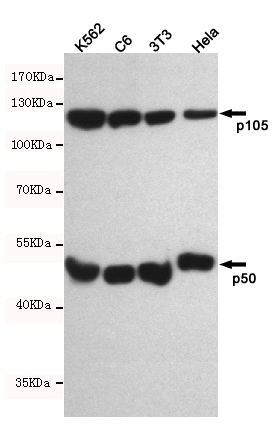- Target:
- NFKB1
- Fields:
- >>Antifolate resistance;>>MAPK signaling pathway;>>Ras signaling pathway;>>cAMP signaling pathway;>>Chemokine signaling pathway;>>NF-kappa B signaling pathway;>>HIF-1 signaling pathway;>>Sphingolipid signaling pathway;>>PI3K-Akt signaling pathway;>>Apoptosis;>>Longevity regulating pathway;>>Cellular senescence;>>Osteoclast differentiation;>>Neutrophil extracellular trap formation;>>Toll-like receptor signaling pathway;>>NOD-like receptor signaling pathway;>>RIG-I-like receptor signaling pathway;>>Cytosolic DNA-sensing pathway;>>C-type lectin receptor signaling pathway;>>IL-17 signaling pathway;>>Th1 and Th2 cell differentiation;>>Th17 cell differentiation;>>T cell receptor signaling pathway;>>B cell receptor signaling pathway;>>TNF signaling pathway;>>Neurotrophin signaling pathway;>>Prolactin signaling pathway;>>Adipocytokine signaling pathway;>>Relaxin signaling pathway;>>Insulin resistance;>>Non-alcoholic fatty liver disease;>>AGE-RAGE signaling pathway in diabetic complications;>>A
- Gene Name:
- NF-κB1 p105/p50
- Human Gene Id:
- 4790
- Human Swiss Prot No:
- P19838
- Mouse Swiss Prot No:
- P25799
- Immunogen:
- Recombinant human NF-κB1 p105/p50 protein.
- Specificity:
- This antibody detects endogenous levels of NF-κB1 p105/p50 and does not cross-react with related proteins.
- Formulation:
- Liquid in PBS containing 50% glycerol, 0.5% BSA and 0.02% sodium azide.
- Source:
- Monoclonal, Mouse
- Dilution:
- wb dilution 1:500
- Purification:
- The antibody was affinity-purified from mouse ascites by affinity-chromatography using epitope-specific immunogen.
- Concentration:
- 1 mg/ml
- Storage Stability:
- -15°C to -25°C/1 year(Do not lower than -25°C)
- Other Name:
- DKFZp686C01211;DNA binding factor KBF1;DNA binding factor KBF1 EBP1;DNA-binding factor KBF1;EBP 1;EBP-1;EBP1;KBF1;MGC54151;NF kappa B;NF kappaB;NF kappabeta;NF kB1;NFkappaB;NFKB 1;NFKB p105;NFKB p50;Nfkb1;NFKB1_HUMAN;Nuclear factor kappa B DNA binding subunit;Nuclear factor kappa-B, subunit 1;Nuclear factor NF kappa B p105 subunit;Nuclear factor NF kappa B p50 subunit;Nuclear factor NF-kappa-B p50 subunit;Nuclear factor of kappa light polypeptide gene enhancer in B cells 1;Nuclear factor of kappa light polypeptide gene enhancer in B-cells 1;p105;p50;p84/NF-kappa-B1 p98.
- Molecular Weight(Da):
- 105kD
- Background:
- nuclear factor kappa B subunit 1(NFKB1) Homo sapiens This gene encodes a 105 kD protein which can undergo cotranslational processing by the 26S proteasome to produce a 50 kD protein. The 105 kD protein is a Rel protein-specific transcription inhibitor and the 50 kD protein is a DNA binding subunit of the NF-kappa-B (NFKB) protein complex. NFKB is a transcription regulator that is activated by various intra- and extra-cellular stimuli such as cytokines, oxidant-free radicals, ultraviolet irradiation, and bacterial or viral products. Activated NFKB translocates into the nucleus and stimulates the expression of genes involved in a wide variety of biological functions. Inappropriate activation of NFKB has been associated with a number of inflammatory diseases while persistent inhibition of NFKB leads to inappropriate immune cell development or delayed cell growth. Alternative splicing results in multiple transcript variants encoding different isof
- Function:
- domain:Glycine-rich region (GRR) appears to be a critical element in the generation of p50.,domain:The C-terminus of p105 might be involved in cytoplasmic retention, inhibition of DNA-binding, and transcription activation.,function:NF-kappa-B is a pleiotropic transcription factor which is present in almost all cell types and is involved in many biological processed such as inflammation, immunity, differentiation, cell growth, tumorigenesis and apoptosis. NF-kappa-B is a homo- or heterodimeric complex formed by the Rel-like domain-containing proteins RELA/p65, RELB, NFKB1/p105, NFKB1/p50, REL and NFKB2/p52 and the heterodimeric p65-p50 complex appears to be most abundant one. The dimers bind at kappa-B sites in the DNA of their target genes and the individual dimers have distinct preferences for different kappa-B sites that they can bind with distinguishable affinity and specificity. Diff
- Subcellular Location:
- Nucleus. Cytoplasm. Nuclear, but also found in the cytoplasm in an inactive form complexed to an inhibitor (I-kappa-B).
- Expression:
- Muscle,Rectum tumor,Uterus,
Sodium Alginate Prevents Non-Alcoholic Fatty Liver Disease by Modulating the Gut–Liver Axis in High-Fat Diet-Fed Rats
Compound Probiotic Ameliorates Acute Alcoholic Liver Disease in Mice by Modulating Gut Microbiota and Maintaining Intestinal Barrier Probiotics and Antimicrobial Proteins Liu, Haixia, Kang, Xing, Yang, Xiaodan, Yang, Hao, Kuang, Xiaoyu, Ren, Peng, Yan, Huan, Shen, Xiaorong, Kang, Yongbo, Li, Lin, Wang, Xiaohui, Guo, Linzhi, Tong, Mingwei, Fan, Weiping WB Mouse liver
Ganoderic Acids Prevent Renal Ischemia Reperfusion Injury by Inhibiting Inflammation and Apoptosis. INTERNATIONAL JOURNAL OF MOLECULAR SCIENCES Int J Mol Sci. 2021 Jan;22(19):10229 WB Rat Renal tissues NRK-52E cell
Metformin attenuates diabetic neuropathic pain via AMPK/NF-κB signaling pathway in dorsal root ganglion of diabetic rats. BRAIN RESEARCH Brain Res. 2021 Dec;1772:147663 WB Rat 1:500 L4-6 DRGs
Nanocarrier of Pin1 inhibitor based on supercritical fluid technology inhibits cancer metastasis by blocking multiple signaling pathways Regenerative Biomaterials Dayun Yang WB Human,Mouse lung tissues HuH7 cell,HepG2 cell
- June 19-2018
- WESTERN IMMUNOBLOTTING PROTOCOL
- June 19-2018
- IMMUNOHISTOCHEMISTRY-PARAFFIN PROTOCOL
- June 19-2018
- IMMUNOFLUORESCENCE PROTOCOL
- September 08-2020
- FLOW-CYTOMEYRT-PROTOCOL
- May 20-2022
- Cell-Based ELISA│解您多样本WB检测之困扰
- July 13-2018
- CELL-BASED-ELISA-PROTOCOL-FOR-ACETYL-PROTEIN
- July 13-2018
- CELL-BASED-ELISA-PROTOCOL-FOR-PHOSPHO-PROTEIN
- July 13-2018
- Antibody-FAQs
- Products Images

- Western blot detection of NF-κB1 p105/p50 in K562, C6, 3T3 and Hela cell lysates using NF-κB1 p105/p50 mouse mAb(dilution 1:500).Predicted band size:120, 50kDa.Observed band size:120, 50kDa.



